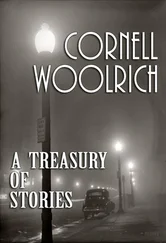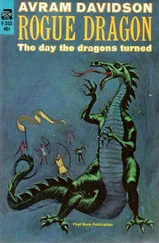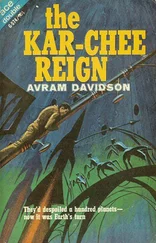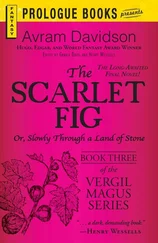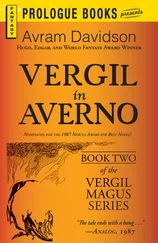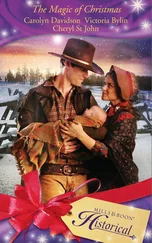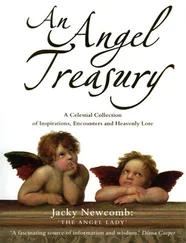My very last conversation with Avram was the day I bought the reprint rights to the following story for an anthology I was editing (Inside the Funhouse if you can find it, and I’ll lay plenty of eight-to-five that you can’t).
“Hark! Was That the Squeal of an Angry Thoat?” is relatively minor Davidson, if such a thing can be said to exist. Yet if you take a good hard look at it, it is absolutely stunning in its complexity, not unlike Avram himself.
The use of language is unique. It might drive an unimaginative high school English teacher straight up a wall, but Avram, like the immortal Walt Kelly before him, refused to be hemmed in by standard sentences and punctuation. Check the end of the very first paragraph; you’ll see what I mean. More to the point, you’ll see, quite clearly, what Avram means.
Then there are the in-jokes. Calvin M. Knox was a pseudonym of the youthful Robert Silverberg — and Wendell Garrett is a very thinly disguised version of science fiction writer and bon vivant Randall Garrett, Silverberg’s sometime collaborator in the early days of his career.
In fact, the entire cast of mildly warped characters acting in concert for no particularly valid reason is reminiscent of many of the conceits of R. A. Lafferty, though with Avram’s unique backspin on the notion.
I could go on and on, but why bother? Avram does it so much better.
Enjoy.
“HARK! WAS THAT THE SQUEAL OF AN ANGRY THOAT?”
AT A TIME SUBSEQUENTLY I was still living back East, we were so many of us then Living Back East, and I was still living on the seventh floor of a seven-floor walk-up in Greenwich Village. Edward lived down the hall: Fox-fire Edward. Fiduciary Debenture III lived downstairs. Gabriel Courland lived around the corner in the hay-loft of the Old De Witt Clinton Livery Stable, a location ideally suited and situate — he said — to pour boiling oil down upon unwelcome visitors: bill collectors, indignant fathers of daughters, people with Great Ideas For Stories (“All you got to do is write it down and we’ll split the money, I’d do it myself if I had the time.”), editors with deadlines, men come to turn off the electricity (the gas) (the water) (the whale-oil)—
“Doesn’t it smell a little in here, Gabe?” asked Edward.
“It smells a lot —but look! Look!” Here he’d point to the neat trap-door through which hay had once been hauled (and maybe smuggled bombazine and who knows what, poled up Minetta Stream, midnights so long long ago). “You can pour boiling oil down on people!”
Edward gives me to understand that Gabe never actually did pour boiling oil or even un boiling oil, down on people; although occasionally, Edward said, G. would allow trickles of water to defoliate the importunate, as who? put it. Someone else.
Fiduciary Debenture III lived downstairs, and across the narrow street dwelt Wendell Garrett, in the parlor of a once-huge apartment deftly cut up and furnished by his Great-aunt Ella, relict of his Great-uncle Pat Garrett, yes! The very same Sheriff Pat Garrett Who; Aunt Ella was in the Canary Islands at the time, teaching (I understand) the two-step to the wives of the Spanish officials, to whom, in that not-exactly-then-in-the-beating-heart-of-things archipelago, it — the two-step-represented Modern Culture, if not Flaming Youth in Revolt, and one of the few (very few) occupations or occasions for which their husbands would let them out of the patio.
“The Moors may have been driven out of Spain,” Aunt Ella had said, or, rather, written; “but they haven’t been driven out of the Spaniards. For God’s sake, Wendell, see to it that Mary Teresa empties the pan under the ice-box.”
Mary Teresa was the, so to speak, concièrge, and refused to allow an electric, gas, or even kerosene fridge to be installed in her own kitchen: slightly larger than a commemorative stamp. This devotion to tradition was much appreciated by the sole remaining Iceman in The Village, whose clientele by that time consisted of several fish markets and a dozen or so other ladies of the same age and model as Mary Teresa; the Iceman was related by ties of spiritual consanguinity to all the prominent mafiosi — a godfather to godfathers, so to speak — and this in turn enabled her to do as she liked and had been accustomed to do, in a manner which would be tolerated in no one else, nowhere else.
Wendell lived rent-free in the former parlor of the house in return for his acting as an Influence upon Mary Teresa and curbing in some few important particulars her turn-of-the-century vigor.
When asked where he lived, he would say, bland as butter, “In a parlor house.”
Round the corner in a decayed Federalist Row located behind an equally decayed non-Federalist row (Whig, perhaps, or, as Wendell once suggested, brushing himself, Free Soil), lived the retired Australian sanitary scientist and engineer called Humpty Dumpty. He had indeed once had a lot of cards printed:
Sir Humphrey Dunston
Remittance Man
Privies Done Cheap Retail and to the Trade
But, he had observed, these last phrases had been subject to most gross interpretations by members of one of the Village’s non-ethnic minorities; so the only card still in evidence was tacked to his greasy front door. Humpty patronized the Ice-man, too, Sangiaccomo Bartoldi, but not for ice: Jockum retained the antique art of needling beer, an alchemy otherwise fallen into desuetude since the repeal of the 18th (or Noble Experiment) Amendment, and which — Humpty Dumpty said — alone could raise American lager to the kick of its Australian counterpart (“Bandicoot’s Ballocks,” or something like that).
If you stood on what had once been the Widow’s Walk atop the only one of the Federalists which still had one, you could toss a rubber ball through the back window of the Death House and into the Muniments Room of Calvin M. Knox. This great granite sarcophagus of a building had once, it was said, carried across the front of it the advice that THE WAGES OF SIN IS DEATH: but only the last of those words remained. Mary Teresa, that repository of local arcane information, sometimes claimed that “The Patriot Boys” had torn off the others to hurl them at the Invalid Corps of the Union Army during what she termed “the Rebellion”—not, indeed, the entire Civil War, but that part of it fought thereabouts and called by others The Draft Riots. Not, of course, by Mary Teresa.
Nor, in fact, did she ever use the name Invalid Corps of the Union Army.
She called them “the Prodissint Bastids.”
“I understand that this used to be a House for Fallen Women,” Fiduciary Debenture III had once said to Calvin Knox.
“Yes,” said C. Knox, gloomily, “and if you’re not careful, you’re going to fall through the very same place in the floor, too. It quivers when my cat walks across it.” It was in consequence of this statutory infirmity of part of the front floor that the back chamber was called the Muniments Room and was heaped high with pulp magazines in neat piles, each bearing some such style and label as (it might be) Influences of Ned Buntline on Doc Savage, or Foreshadowings of Doc Savage in Ned Buntline, or Seabury Quinn Type Stories Not Written By Seabury Quinn, and J. Sheridan Le Fanu Plot Structures Exemplified in Spicy Detective Stories.
And, as Mary Teresa so often put it, ecKt, ecKt, ecKt.
“I have reduced,” C. Knox said, entirely without boastfulness, “the Basic Short Story to its essential salts.”
The last, the very very last of the Hokey Pokey Women practiced in the basement. Edward often patronized her.
Читать дальше

